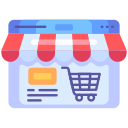Tackle real-world UX and product design challenges to build your skills and portfolio and create impactful solutions.
 Fintech
Fintech
Managing debt is a challenge for many users, especially those juggling multiple loans or credit card balances. Most financial apps focus on tracking debt rather than providing actionable strategies to pay it off efficiently. A tool that helps users optimize repayments, minimize interest, and visualize progress can empower them to regain financial control.
 Fintech
Fintech
BNPL services are growing rapidly, but many users struggle with unclear repayment terms, hidden fees, and poor visibility into outstanding balances. A lack of financial education leads to overspending and financial stress. A clearer, more responsible BNPL experience can empower users to manage purchases without financial strain.
 Fintech
Fintech
Splitting expenses with friends, roommates, or partners is a frequent but frustrating task. Whether it’s tracking who paid for dinner, splitting rent, or settling after a trip, users often turn to spreadsheets or screenshots. Existing tools are rigid or overly formal. There’s room for a more social, fluid, and low-friction approach to shared finance.
 E-commerce
E-commerce
E-commerce teams rely heavily on historical data, but reacting to the past isn’t enough. They need forward-looking insights—who will buy, what’s trending, and when demand will spike. A predictive analytics system could help businesses anticipate customer needs and align their inventory, marketing, and operations before it’s too late.
 E-commerce
E-commerce
Gifting isn’t always immediate—birthdays, holidays, and milestones often need timing. But most platforms treat gift sending as an instant checkout event. Users want to plan gifts in advance, add a personal touch, and ensure perfect delivery timing. A well-designed gift scheduling flow could create emotional impact without added complexity.
 Fintech
Fintech
Small businesses and freelancers spend significant time manually creating, tracking, and managing invoices. Many existing invoicing tools lack automation, resulting in delayed payments and inefficient financial workflows. A more intelligent invoicing system can streamline operations, reduce errors, and improve cash flow management.
 E-commerce
E-commerce
Many shoppers feel like “just another user” on e-commerce platforms. Despite constant browsing and repeated purchases, product recommendations often miss the mark. Users want a shopping experience that feels like it knows them—what they love, when they shop, and what deals matter most. Personalized journeys can boost satisfaction, loyalty, and conversions.
 Fintech
Fintech
From freelancers to suppliers, paying vendors can quickly become a messy spreadsheet nightmare. Many businesses still rely on manual bank transfers, email approvals, and scattered receipts. A modern vendor payment system should be fast, organized, and adaptable to changing needs.
 Fintech
Fintech
Managing shared expenses with friends, roommates, or colleagues is often frustrating, leading to delayed payments and misunderstandings. While some apps offer bill-splitting features, they lack automation and integration with various payment platforms. A seamless expense-sharing tool can simplify payments and ensure fairness among users.
 E-commerce
E-commerce
In marketplaces or food platforms, users often place orders from multiple vendors in a single session. But most carts aren’t built for that complexity. Users get confused about delivery times, payment breakdowns, and item status—especially when vendors fulfill separately. A better cart could clarify, simplify, and convert more.
 E-commerce
E-commerce
Customers use different support channels—chat, email, phone—depending on urgency, device, or time. But most e-commerce platforms treat each channel as disconnected. Users repeat themselves, lose context, or get inconsistent answers. A smarter support system could unify these interactions into a consistent, personalized experience across every touchpoint.
 E-commerce
E-commerce
First-time visitors often land on a homepage designed for everyone—and no one. Without purchase history, most platforms serve generic categories or trending items, leaving new users overwhelmed or disengaged. A better first-visit flow could adapt to user signals and help them discover products aligned with their intent or taste.
 E-commerce
E-commerce
Shoppers often browse individual products without knowing how to style them. Static product pages don’t help users visualize how pieces fit together. An intelligent outfit builder could recommend full looks based on user taste, weather, occasion, or past purchases—bridging inspiration and utility in one flow.
 Fintech
Fintech
Solo entrepreneurs and creators often need a quick way to collect payments without building a website or integrating a full checkout flow. Tools like PayPal and Stripe exist, but the setup is still too complex for one-off transactions or informal sales over chat or email. A frictionless, customizable payment link tool would empower independent earners.
Connect with other professionals, get feedback on your work, find accountability partners, and grow your skills together. Our community helps you stay motivated and improve faster